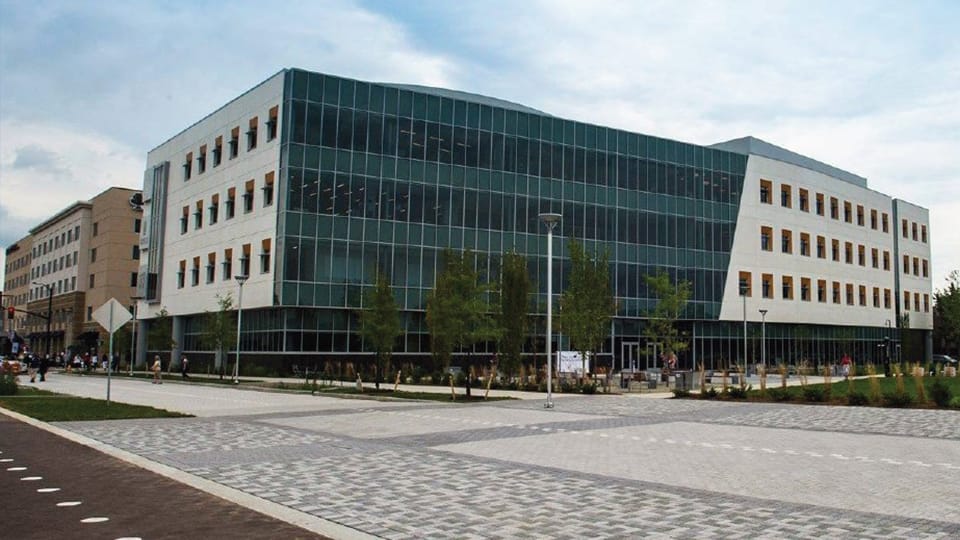Study shows $1B impact of Evansville health and life sciences sector
Subscriber Benefit
As a subscriber you can listen to articles at work, in the car, or while you work out. Subscribe Now
A new study released by the Evansville Regional Economic Partnership shows that the region’s health and life sciences sector has grown significantly in its economic impact.
Due in large part to the $70 million Stone Family Center for Health and Life Sciences, which opened in 2018, the study says the sector has contributed nearly $1 billion to the regional economy from 2013 to 2022.
“What we’ve seen from other regions that we’ve benchmarked ourselves against is that you have to have a strong regional identity if you want to grow and retain top,” said Tyler Stock, executive director of Talent EVV for E-REP. “So this is just a way for us to continue to build upon that regional identity of having a strong health and life science sector.”
Stock said the study found that health and life sciences is the region’s fastest-growing sector.
“We continue to see that growth over the last even three to five years,” he said. “The study really highlighted that we are the fastest-growing health and life sciences sector among the peer markets mentioned in in the report.”
Those markets include Fort Wayne, Indiana; Chattanooga, Tennessee; Greenville, South Carolina; Kansas City, Missouri; Grand Rapids, Michigan; and Charlotte, North Carolina.
The Stone Family Center was created to bring together students and faculty from the Indiana University School of Medicine-Evansville, the University of Evansville and the University of Southern Indiana and feed into residency programs at multiple area hospitals, including Deaconess Health System and Ascension St. Vincent in Evansville.
The study found that approximately 500 graduate-level medical and health science students are being educated at the center, and the number of residents in training grew from 18 to 116 over the nine-year period.
“It really showed that in terms of the number of graduates that we’re producing per capita, we’re competing with the best of the best,” Stock said. “And it really has catalyzed our ability to grow our residency programs, which has been just a huge asset to growing and continuing to pour into and investing in our health and life science sector.”
The study projects that 76 new physician graduates by 2026 from new residency programs will generate nearly $197 million to the regional economy.
University of Evansville President Christopher Pietruszkiewicz said the Stone Family Center is the result of many years of unique and dedicated collaboration.
“UE’s Doctorate in Physical Therapy and Physician Assistant programs are housed exclusively at the Stone Center and more than 350 UE learners live, work, and play in our city, providing a significant boost to our local economy—and they stay here after they graduate, expand access to health care in Southwest Indiana, and amplify the economic impact of the Stone Center,” he said.
Additionally, the Stone Family Center was found to have a direct and indirect impact on jobs, employing 76 people at the facility itself and supporting 249 jobs throughout the region stemming from student, faculty and staff spending.
“The Stone Family Center for Health and Life Sciences and the resulting collaboration between regional higher education and health care provider organizations is delivering on the promise of an enduring economic impact to the Evansville region,” Deaconess Health President James Porter said. “In addition to the economic impact of individual well-trained health care professionals who remain here to practice, a more robust workforce in the healthcare sector improves access to quality health care, allows the entire health care industry to grow and attracts other businesses to the region.”
Looking ahead, Stock said the next step for the health and life sciences sector in southwest Indiana is to focus on attaining funding from the National Institutes of Health. He said officials want to leverage the Stone Family Center for more research and development moving forward.
“With the partnerships that have been built over the past 10 years and the momentum picking up, we see that as a huge opportunity,” he said. “So [we’re] going after some federal grants in that space, and really just expanding our research opportunities.”
He said they also want to look into leveraging partnerships in the region’s advanced manufacturing sector to find ways to grow in the biomedical manufacturing space.
“Knowing that we have a critical mass of manufacturing and knowing that we have this great facility where collaboration can happen, how do we kind of bring all those things together to really create some organic opportunities in the economic development space around biomedical manufacturing?”
You can connect to the full study by clicking here.
